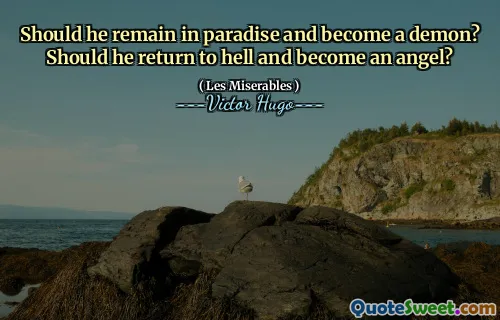The real human division is this: the luminous and the shady. To diminish the number of the shady, to augment the number of the luminous,-that is the object. That is why we cry: Education! science! To teach reading, means to light the fire; every syllable spelled out sparkles. However, he who says light does not, necessarily, say joy. People suffer in the light; excess burns. The flame is the enemy of the wing. To burn without ceasing to fly,-therein lies the marvel of genius. When you shall have learned to know, and to love, you will still suffer. The day is born in tears. The luminous weep, if only over those in darkness.
In the perspective offered, society is divided between the "luminous" and the "shady," where the aim is to increase the number of enlightened individuals. Education and knowledge are seen as crucial tools to ignite awareness and understanding in people. Learning to read is equated to sparking a flame of insight; however, this light can also bring suffering, as knowledge does not guarantee joy. The challenge lies in embracing both the enlightenment and the emotional pain that comes with it.
The text highlights the paradox of illumination: while knowledge shines a light on reality, it can also lead to sorrow. The "luminous" may experience pain, especially for those still in darkness. True genius, it suggests, is the ability to balance this illumination with the ability to soar above life's challenges. Ultimately, the quest for understanding often leads to tears, as those who perceive the light also empathize with the struggles of others.






